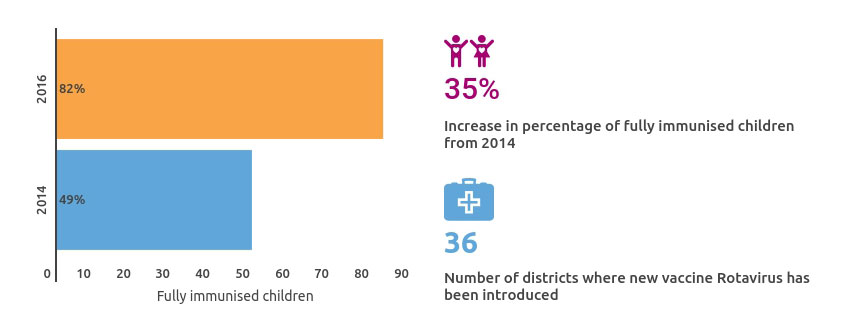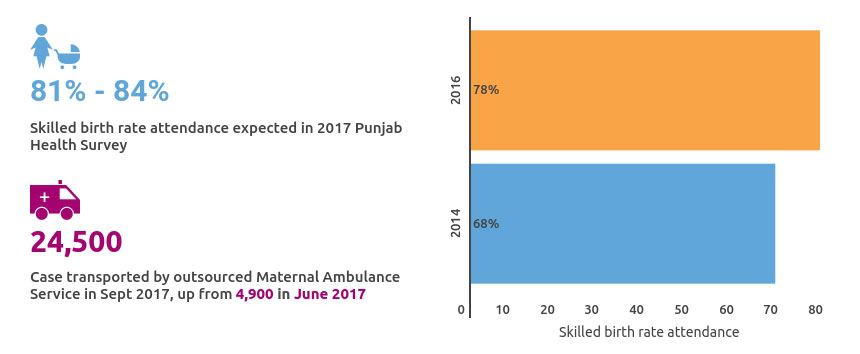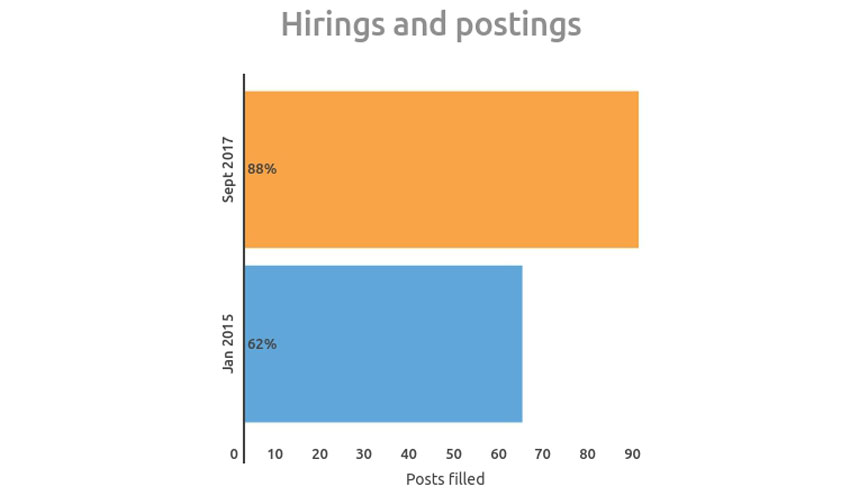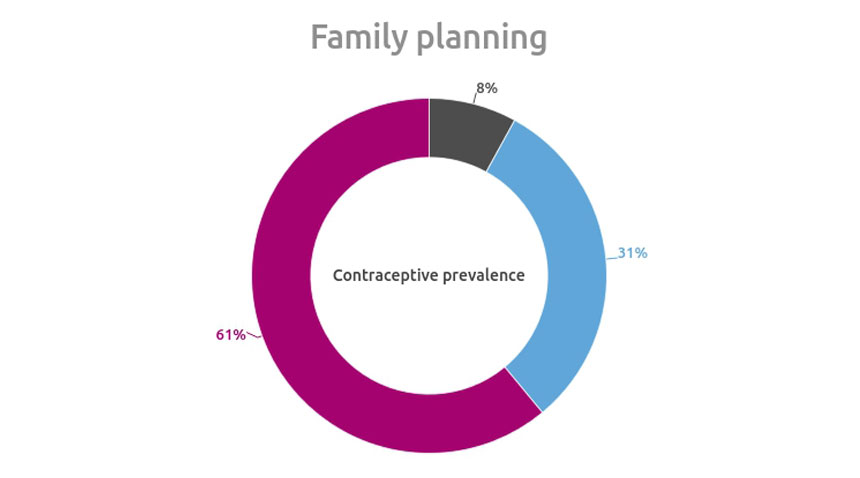Snapshot: Punjab’s Health Reforms
The Punjab Health Reforms Roadmap was started in 2014. Here are the major takeaways from the most recent stocktake.
October 31, 2017
The Punjab Health Reforms Roadmap was initiated in April 2014, to improve the quality of healthcare facilities in Pakistan’s most populous province, Punjab.
In the last three years, the Chief Minister of Punjab, Shehbaz Sharif, has quarterly reviewed the progress in the ongoing project by holding high-level meetings that are attended by the provincial cabinet, bureaucrats, international donors and the media.
Here are some of the takeaways from a recent evaluation held in Lahore:
Vaccine Immunization

• The percentage of fully immunised children, between the ages 12-23 months, increased to 82 percent in 2016 from 49 percent in 2014. (The data for this year is still being finalised).
• A new vaccine for Rotavirus, a severe infection that can lead to diarrhea and vomiting among infants and young children, is now available in 36 districts of Punjab.
• By 2018, the provincial government aims to add the Diphtheria/Polio/Tetanus and measles booster shot to its immunization program.
• South Punjab’s DG Khan and Rajanpur are the most troublesome districts, with the lowest immunization coverage.
Maternity care

• The percentage of skilled birth rate attendance, which includes midwives, nurses and health professionals, has registered an uptick from 68 percent in 2014 to 78 percent in 2016.
• Maternal ambulance service usage has grown from transporting 4,900 cases at its inception in June 2017 to 24,500 cases in September 2017.

Medical Officers
• Over 88 percent vacancies at Punjab’s Basic Health Units of medical officers were filled by September 2017.
• This year, officials interviewed over 7,000 patients at BHUs and government facilities, every month, to compile exit surveys regarding patient care and customer satisfaction.

Family Planning
Family Planning remains a problematic sector for the Punjab Government. Officials admit that the contraception prevalence rate has not shown much progress in the last three years. 8 percent of the people in the province use traditional methods of contraception, which includes abstinence. While, only 31 percent use modern methods, such as condoms and emergency contraception. And 61 percent do not use any contraception at all.











